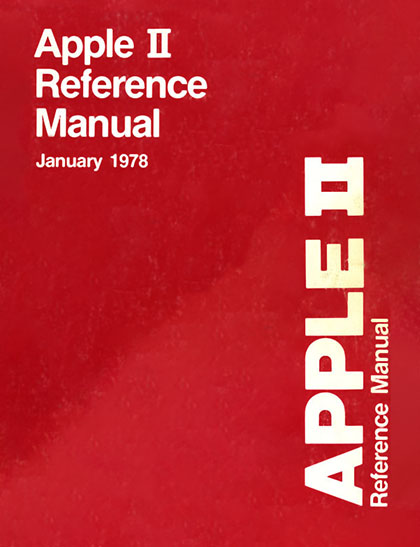
Mainframes
When computers first arrived on the world stage the only people who knew much about them were the people who designed them. So they came with a wide assortment of manuals and technical bulletins. One of these would be an operations manual that explained the general operation and maintenance of the machine and would list the machine code instruction set along with explanations of word storage, address and arithmetic registers, etc., so you could write programs to make the computer useful. The 704 was one of the first computers to support symbolic assembly language, so there was a manual for that. In 1958, the 704 became the first computer to support a higher-level programming language, FORTRAN, so was a series of manuals for that. It is worth noting, however, that in the days of "big iron" you often weren't entirely on your own. If you leased the computer system, it often came with an on-site technician who kept it running and could help with questions.
IBM 704 Operations Manual IBM 704 FORTRAN Primer
Personal Computers
If you had to put a date on the advent of personal computing, it would probably be 1977. Prior to that, there had been a number of single-user systems developed and marketed, but they were intended primarily for specific uses in the office and commerce, not for the home user. 1977 saw the introduction of three personal computers: the Commodore PET, the Apple II, and the TRS-80. They were all based on microprocessors, which had only recently come onto the market, and created what was to be a seismic shift in computer technology and applications. In general, personal computers came with an operating system, a BASIC interpreter, and some manuals guiding you through how to set it up, how to use BASIC, and how to play some simple ASCII-graphics games. The first run of Apple II computers came with a 68-page mimeographed "mini manual" that was shortly replaced by the "Red Book." These early manuals were more or less afterthoughts, created by rifling through engineers' desks for anything that seemed like documentation that would be useful for users. By the time the IBM Personal Computer came onto the market in 1981, however, manuals were much more polished. The IBM PC came with three manuals, still very technical for a typical user, but carefully bound in loose-leaf hardbound binders to be handsomely displayed on any bookshelf.
Apple II Red Book Apple II DOS Manual
Applications
Like many early adopters, the first to buy a personal computer were operating mostly on curiosity and a faith that vaporware would become software. And gradually it did. There were popular hobby applications, like ways to store and sort your recipes or audio cassettes. Thousands of people set to work in their basements or garages trying to develop the next "big thing." But two types of applications really proved the personal computer and moved it from the home to the office: the word processor and the spreadsheet. VisiCalc was the first ever spreadsheet and created a large market for the Apple II beyond home and school. And by the mid 1980s, there were some 30 word processor applications on the market. The market leader, at least at first, was WordStar. All these applications had at least one comprehensive manual. WordStar came with three manuals, but had add-on programs for spell checking and mail merge, so it added manuals for those as well. These user manuals were often highly technical or explained only commands, not applications, so bookstores began to be filled with how-to manuals that were easier to understand or explained how to apply the software to real-world problems.
Wordstar 3.3 Reference Manual for Apple II VisiCalc Apple II Manual